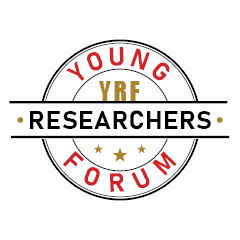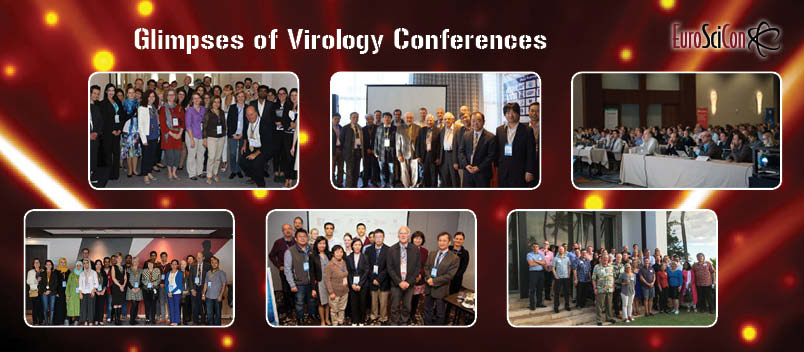virology 2020
ABOUT CONFERENCE
EuroSciCon is proud to host a 3rd Edition of International Conference on Virology taking place on Decdmber 22-23, 2020 in Zurich, Switzerland. The conference is themed around “Emerging trends and innovations in the field of Virology “with the aim to bring together a wide audience of industry, healthcare, research, and medical practitioners to educate and bring about a fruitful debate on the confined topics.
The Virology 2020 will be a great event to network, learn and engage with professionals in the field of infectious diseases, virology and microbiology.
The Organizing Committee has done its best to set up a framework that we think will allow for a creative interplay of ideas. All we need now is to convert the extensive program on paper to an active and a vibrant forum in person through your active participation.
Who should attend?
- Microbiologist
- Microbiology and Virology Students
- Virologist
- Scientists
- Microbiology and Virology Researchers
- Microbiology and Virology Faculty
- Medical Colleges
- Microbiology and Virology Associations and Societies
- Research Labs
- Manufacturing Medical Devices Companies
Why to attend?
With members from around the world focused on learning about Microbiology and Virology and its advances; this is your best opportunity to reach the largest assemblage of participants from the Microbiology and Virology community. Conduct presentations, distribute information, meet with current and potential scientists, make a splash with new Microbiology and Virology developments, and receive name recognition at this 3-day event. World-renowned speakers, the most recent techniques, developments, and the newest updates in Microbiology and Virology are hallmarks of this conference.
Top Associations and Societies of Virology:
- Center for Emerging Viral Infections Research
- Hunter Medical Research Institute
- Center for Global Research and Intervention in Infectious Diseases
- Infectious and Immunologic Diseases Research Center
- Global virus network
- HIV Medicine Association
- International AIDS Society
- Canadian Society for International Health
TRACKS/SESSIONS
Coronavirus (COVID-19)
The Novel Coronavirus disease is an infectious disease caused by a newly discovered coronavirus (COVID-19). In humans, coronaviruses cause respiratory tract infections that can range from mild (common cold) to lethal (SARS, MERS, and COVID-19) and recover without requiring special treatment and in birds and mammals also cause various diseases. People with medical problems like diabetes, chronic respiratory disease, cardiovascular disease, and cancer and also in elder are more likely to develop serious illness. At present, no specific treatment is there for disease caused by a novel coronavirus.
General Virology
Virology is the scientific discipline concerned with the study of the biology of viruses and viral diseases, including the distribution, biochemistry, physiology, molecular biology, ecology, evolution and clinical aspects of viruses. Viruses also cause serious diseases in plants and livestock. Viruses have been implicated in a disease that is ravaging our honeybees, threatening natural pollination cycles and thus much of agriculture. A major branch of virology is virus classification. Viruses can be classified according to the host cell they infect animal viruses, plant viruses, fungal viruses, and bacteriophages. Viruses cause many important infectious diseases, among them the common cold, influenza, rabies, measles, many forms of diarrhea, hepatitis, Dengue fever, yellow fever, polio, smallpox and AIDS. Herpes simplex causes cold sores and genital herpes and is under investigation as a possible factor in Alzheimer's. The study of the manner in which viruses cause disease is viral pathogenesis. The degree to which a virus causes disease is its virulence.
Molecular and Cellular Virology
Viral evolution is a subfield of evolutionary biology and virology that is specifically concerned with the evolution of viruses. Many viruses, in particular RNA viruses, have short generation times and relatively high mutation rates (on the order of one point mutation or more per genome per round of replication for RNA viruses). Virus Genomes are very small and they are incredibly diverse and subject to rapid genetic change.
Animal Virology
Viruses are smaller and simpler in construction than unicellular microorganisms, and they contain only one type of nucleic acid—either DNA or RNA—never both. As viruses have no ribosomes, mitochondria, or other organelles, they are completely dependent on their cellular hosts for energy production and protein synthesis. They replicate only within cells of the host that they infect. Animal virology developed largely from the need to control viral diseases in humans and their domesticated animals. Viruses, like other infectious agents, enter the animal body through one of its surfaces. They then spread either locally on one of the body surfaces or through lymphatic and blood vessels to produce systemic infection. Iridoviridae and African Swine Fever Virus, adenovirus, Papillomavirus and Polyomavirus, herpesvirus are some of the major viruses causing diseases in cattle. At least one major disease of each domestic animal species except sheep is caused by a herpesvirus, including such important diseases as infectious bovine rhinotracheitis, pseudorabies, and Marek's disease. However, there are several approaches to their prevention, control, and eradication. The most generally useful control measure is the use of vaccines.
Clinical and Diagnostic Virology
Diagnosis of any probable viral infection with the help of various tests such as, specific, assorted or conventional tests to identify the causative virus. Multiple methods are in use for laboratory diagnosis in probing the viral infections, including serology, viral culture, antigen detection, and nucleic acid detection. Due to various developments in the technology, we see high-end and quite impressive immunologic and molecular diagnostic tests are developed to provide more accurate results and to detect the viruses- type, number and to identify their pathogenicity as well. This field provides specific recommendations for diagnostic approach to clinically important viral infections.
Viral Immunology
Viral immunology is simply the study of immune responses to viruses. A prolonged tissue-damaging effect resulting from an immune reaction against viruses is considered immunopathology. Such situations most commonly involve persistent viruses, which are themselves often mildly cytodestructive in the absence of an immune reaction. Chronic tissue damage initiated by viruses can also result in development of an autoreactive and an occasionally oncogenic response
Anti-Retroviral Therapy
Antiretroviral therapy refers to HIV treatment that uses a combination of two or more antiretroviral drugs. Antiretroviral therapy revolutionized HIV treatment upon its introduction in 1996. Antiretroviral therapy is an effective treatment for HIV. It does not cure the condition, but it can reduce the viral load to undetectable levels. This means that the virus is not transmittable through sexual activity and a person's immune system can recover. It usually takes around 3–6 months for the viral load to reach undetectable levels.
Pediatric Viral Infectious Diseases
Infections caused by viruses are universal during childhood and adolescence. Clinicians will regularly care for children and adolescents who present with infections caused by a wide number of viral pathogens. These infections have varied presentations. Many infections may have clinical presentations that are specific to the infecting virus but present differently, based on the age and immunocompetence of the patient. Some children are directly impacted early in their lives when maternal disease results in an in utero infection (cytomegalovirus, rubella virus, or parvovirus B19). Other viruses may infect children in a predictable pattern as they grow older (rhinovirus or influenza virus).
Antiviral Drug Discovery and Development
Viruses are intracellular pathogens that have evolved many devious strategies to evade host immune responses and, as a consequence, have plagued human health throughout history. Combating viral diseases with vaccines or antiviral drugs, or both, is a constant challenge. Even when successful strategies are discovered and employed, the high rate of genetic change exhibited by many viruses, particularly RNA viruses, often enables drug resistance or vaccine escape. This is compounded by the periodic emergence of new viral pathogens.
Viral Vaccines
Vaccines have been among the most effective health approach for protecting the individual against viral disease, with two of worlds successful vaccine being against small pox and poliovirus. Viral vaccines is a combination of inactivated viruses and activated viruses. Inactivated or killed viral vaccines contain viruses, they do not have ability to replicate and to bring about a response it contains an antigen. Activated or livevaccines contain the live form of the virus. Currently, Virus like particles organizes a new vaccine concept. Such particles consist of self-assembled structural proteins from the virus which can elicit an immune response but as they lack the genetic material from the virus are safer vaccines, research going on the rational development of a triple-layered virus like particle vaccine against rotavirus using the baculovirus insect cell system as production platform.
Plant and Agricultural Virology
The epidemiology of plant virus diseases concerns the cyclical development of virus diseases within plant populations in time and space. Tobacco mosaic virus (TMV) is a positive-sense single stranded RNA virus that infects a wide range of plants, especially tobacco and other members of the family Solanaceae. In the viral life cycle, viral entry is the emergent stage of infection, as the virus invades with the host cell and intrudes viral material into the cell.
Viral Oncology
Viral oncology is a subdivision of oncology,in these it is concerned with treatment of human cancers /tumors with virus particles. Approximately 20% of all cancers worldwide results from chronic infections, in specific, up to 15% of human cancers is characterized by a viral aetiology with higher incidence in Developing Countries. Certainly, the infectious nature of specific tumors has important implications in their prevention, diagnosis, and therapy. In the 21st Century, the research on viral oncology field continues to be dynamic, with new significant and original studies on viral oncogenesis and as a translational research from virology for the treatment of cancer.
STD & HIV/ AIDS and Emerging Viral Di,seases
The human immunodeficiency virus is a lentivirus that causes HIV infection and AIDS.HIV diagnosis is done by testing your blood or saliva for antibodies to the virus. HIV/AIDS clinical trials are research studies done to have a better approach, distinguish, or treat HIV/AIDS. Clinical trials are the predominant way to determine if new medical approaches to HIV/AIDS are safe and effective in people.
Respiratory viral diseases
Recently one of the most common viral infections are the respiratory tract infections. Respiratory tract infections are including with the infection of sinuses, throat, airways or lungs. The respiratory tract infections(RTI) are generally classified in tow subdivisions as Upper Respiratory tract infections(URTI) and Lower Respiratory tract infections(LRTI). The viruses which are associated with respiratory disorders these are adenovirus, parainfluenza virus, respiratory syncytial virus, coronavirus, Coxsackie virus, human metapneumovirus.
Gastrointestinal viral diseases
Viral gastroenteritis is an intestinal infection marked by watery diarrhea, abdominal cramps, nausea or vomiting, and sometimes fever. The most common way to develop viral gastroenteritis — often called stomach flu —is through contact with an infected person or by ingesting contaminated food or water. If you're otherwise healthy, you'll likely recover without complications. But for infants, older adults and people with compromised immune systems, viral gastroenteritis can be deadly. There's no effective treatment for viral gastroenteritis, so prevention is key. In addition to avoiding food and water that may be contaminated, thorough and frequent hand-washings are your best defense.
Neurologic viral diseases
Neurological viral diseases is the most important field that signifies the connection of clinical neuroscience, virology, immunology, and molecular biology. The main target of this field is to investigate the viruses which can infect the nervous system. Without this there is a additional study of this division, the use of some viruses to trace neuroanatomical pathways, for gene therapy, and to eliminate detrimental populations of neural cells.
Hepatic viral diseases
Hepatitis means inflammation of the liver. Many illnesses and conditions can cause inflammation of the liver, for example, drugs, alcohol, chemicals, and autoimmune diseases. Many viruses, for example, the virus causing mononucleosis and the cytomegalovirus, can inflame the liver. Most viruses, however, do not attack primarily the liver; the liver is just one of several organs that the viruses affect. There are several hepatitis viruses; they have been named types A, B, C, D, E, F (not confirmed), and G. The most common hepatitis viruses are types A, B, and C. Reference to the hepatitis viruses often occurs in an abbreviated form (for example, HAV, HBV, HCV represent hepatitis viruses A, B, and C, respectively.)
Insect vector and virus epidemiology
Currently, molecular studies on replication, assembly, and host interactions of insect viruses have contributed enormously to molecular, cellular, organismal biology. The ease with which many insect viruses are propagated in cell cultures or live animals, the high yields virus particles or virus encoded macromolecules and the simplicity with which many insect viruses can be genetically manipulated represent just a few experimental advantages provided by these pathogens.
Viral epidemiology is concerned with study of incidence and spread of viruses in population over time. Host, virus and environmental factors are monitored to determine the dynamics of viral infections, the ultimate goal of which is to devise intervention strategies.
Bacterial and Fungal Virology
The study of parasites that multiply inside bacteria by making use of the host biosynthetic machinery is known as bacterial virology. Bacteriophages are the viruses that infect and replicate in bacteria. Since the early 1970s, bacteria have continued to develop resistance to antibiotics such as penicillin, and this has led to a renewed interest in the use of bacteriophages to treat serious infections.
It deals with viruses that infect fungi are known as Mycoviruses. Mycoviruses have double-stranded RNA genomes and isometric particles, but about 30% of them have positive sense and single-stranded RNA genomes, to be a true Mycoviruses, they must have an ability to be transmitted ( in other words be able to infect other healthy fungi).
Current Focus in Virology Research
Current research in virology includes the investigation of mechanism of HIV replication and pathogenesis .Diseases such as Alzheimer's disease and HIV-1-associated dementia. Other research involves chronic and latent infections caused by viruses such as Epstein-Barr and Kaposi's sarcoma associated herpes virus and herpes simplex and the retrovirus. Scientists are also studying viral host interactions along with the mechanism of viral induced cellular transformation.Drug-drug interactions happen when a drug interacts, or meddles, with another drug. change the way either of the drug demonstration in the body, or cause sudden reactions. The drug included can be doctor prescribed solutions, over-the-counter meds and even vitamins and normal items.
Microbiology
Pure Microbiology provides a broad platform of a large plethora of research and plenty of new insights into different areas of Microbiology.
Different branches of Microbiology include mycology, Virology, Immunology, infectious diseases , bacteriology, nematology, parasitology, etc., The antibiotics are the agents used against pathogenic bacteria, either orally or paternally.
Market Analysis
Virology Conferences advisory board invites all the participants across the world to attend “3rd Edition of International Conference on Virology” going to be held during December 22-23, 2020 in Zurich, Switzerland. The Theme of the conference is “Emerging trends and innovations in the field of Virology" will explore the advances in Virology.
Market Analysis:
The global virology market is estimated in 2017 at $1693 million and is estimated to grow at a CAGR of 5.4% during the forecast period 2018-2023. North America is one of the largest virology market led by the U.S., owing to technological advancements such as rapid, portable diagnostics. North America is expected to retain the top market position over this forecast period.
Globally the Europe is projected to maintain the position as the second largest market. Throughout the forecast period, Europe is estimated to record the highest CAGR, recognized by enhanced healthcare infrastructure, growing affordability of diagnostic tests for viral diseases and facilitated access to diagnostics.
The global viral inactivation market size was valued in 2016 at USD 1.8 billion and is expected to witness a CAGR of 12.5% during these forecast period. The Industrial Analysis of Virology in between 2016-2022 as shown below
Key Players in the Global Virology Market
The famous players identified in the global virology market include GlaxoSmithKline plc, Abbott Laboratories, Novartis International AG, Siemens,Ingelheim Corporation, Merck and Co. Inc., Johnson & Johnson, AstraZeneca AB, and Roche.
Merck and Co. Inc. in phase 2 has several drug candidates, including diabetes, cardiac arrest, cancer, and hepatitis C, and in phase 3 some candidates, including breast cancer, Alzheimer's, Ebola, and HIV and also has many other candidates, which are currently under review.
Abivax, one of the high profile biotech companies in Paris, France, has already successfully produced candidates against dengue and chikungunya viruses. The company has a few more candidates against HIV and Ebola, currently under development.
Virology Market: Segmentation
The Virology Market stands segmented By Product Type into Diagnosing Test like DNA Viruses, RNA Viruses, Prions Diagnostic Test, and Other Viral Tests.
On the basis of diagnosis tests, hepatitis B, Hepatitis C, HIV, Human papillomavirus (HPV), and other tests (like influenza, Ebola, and dengue) are estimated to hold the largest market share globally during the forecast period. Active Prophylaxis (Vaccines), Passive Prophylaxis, Antiviral Chemotherapy (Veridical Agents, Antiviral Agents, Immune modulators), Interferon’s (Cytokines) are some of the Viral Infection controlling Methods. Immune prophylaxis therapy and antiviral drugs are the fastest growing market segments in these estimated forecast period.
Virology Market is segmented By Applications into Skin and Soft Tissue Infections, Respiratory Tract Infections, GI Tract & Urinary Tract infections, Eye Infections, Sexually Transmitted Diseases, Perinatal Infections. In the global virology market STDs, Urinary tract infections, and respiratory tract infections are currently dominating as compared to the other application types. Virology Market is segmented By End Users into Hospitals, Clinics, Laboratories, Diagnostic Centres, Blood Banks, and Pharmacies.
Importance & Scope:
Virology is the study of viruses. It is important to study viruses because it will allow us to understand the different mechanisms that viruses use to replicate inside a cell, and therefore, we can target those mechanisms without causing high toxicity to the infected organism.
The fields of virology and genomic research have been closely linked for many years; the first whole genome to be sequenced was viral in origin – bacteriophage phi X174, in 1977. As then, many more viral genomes have been mapped, and with the human genome also available, it is now possible to determine viral–host interactions during infection. This has been consequently provided a complete record of potential antiviral targets to be researched. A dramatic increase in research in the field of rational drug design is due to the advent of the HIV pandemic led, resulting in the large number of antiviral drugs and vaccines arriving clinical trials today.
A virologist is specialized who studies the growth, development, structure and characteristics of different viruses. They isolates and makes cultures of significant viruses in a standard inhibitory medium, controlling certain factors, like, aeration, moisture, temperature, and nutrition, etc.
Far of the research here involves using animal studies, and also use information from host and viral genomes to conclude viral virulence. Plant virology is a branch of study of viruses and how they affect plants. These infections can have a terrible impact on agriculture in developing nations.
Until recently, the only micro biota that we could identify in a complex community (e.g., gut flora or seawater) was those we could cultivate. In the 21st century the research will allow the identification of new families of organisms (including viruses) by high-speed sequencing of RNA and DNA. An example of “deep sequencing” technology of mixed populations were found in respiratory secretions and gastrointestinal contents is revealing novel virus families, together pathogenic and non-pathogenic.





















